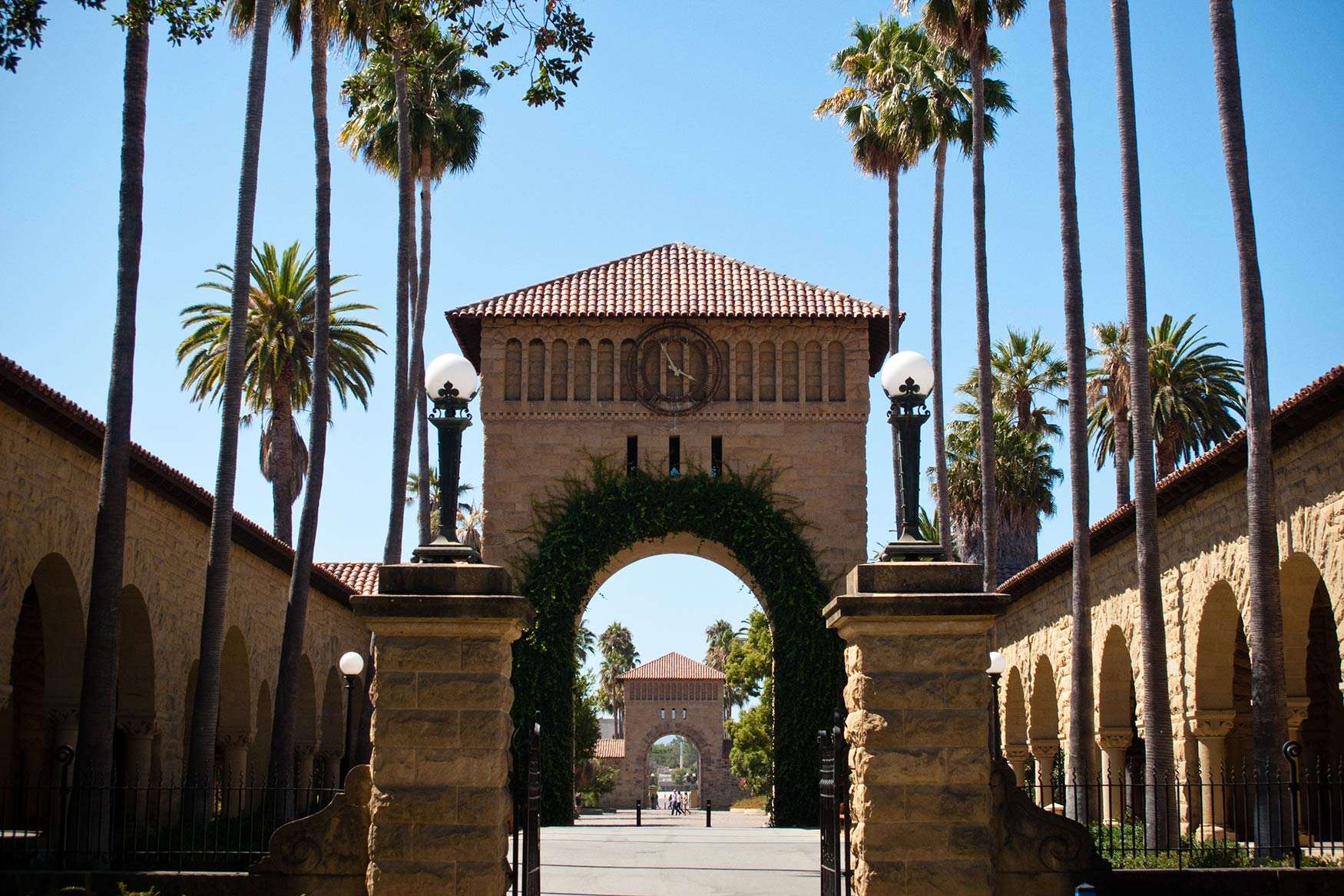5 Things to Know Before Applying to Stanford Graduate School of Business
November 30, 2017 :: Admissionado Team
Rankings aside, Stanford Graduate School of Business remains, in our eyes, the one school that has historically been able to truly compete with Harvard for first place (and it’s twice as hard to get accepted).
The school’s name is usually synonymous with words like “venture capital”, “tech”, “geniuses”, “entrepreneurship”, and phrases like, “a little bit weird.”
Those applying to Stanford GSB should know that it’s the most selective MBA program out there. It’s known for its personalized program, small size, focus on entrepreneurship, and prime Silicon Valley location. Stanford is all about the individuals i.e. the geniuses. The school’s incoming class systematically has the highest average GMAT and TOEFL scores, as well as the highest GPA of all MBA programs in the world.
And it’s not just about test scores and GPA. Stanford GSB adcoms also really love people with humanities backgrounds. To give you an idea of just how real this infatuation is: most b-schools’ student populations are made up of folks who fall primarily under the tech, finance, or consulting umbrella (of whom maybe 10-20% studied humanities in undergrad). At Stanford, every year, almost a full 50% of the entire class are humanities students.
So, if your IQ is off the charts, or you acquired a taste for Aristotle or Niche during undergrad, and are thinking of applying to Stanford GSB, here are five things from our MBA admissions consulting experts to know.
1. Stanford’s MBA program is more intimate than most
How intimate? We’re talking 125 professors for a class of about 825 enrolled students. That works out to about 400 per intake which is about a 6:1 ratio. Most professors teach only one or two classes a quarter. This affords them a high level of availability to meet with students outside of class.
The school’s system of faculty advising is intended to provide students with an opportunity for more interaction and engagement. The idea of creating an environment that helps build stronger relationships and connections between individuals and their professors is something that makes Stanford GSB truly unique.
2. Stanford is an Entrepreneur’s Paradise
If you’re applying to Stanford GSB, this shouldn’t be a surprise. After all, it’s the school that made the valley, the valley. We remember hearing a rumor that one of every two Silicon Valley startups was started by a Stanford grad… Well, we haven’t seen the statistics, but it wouldn’t surprise us.
Whatever the case, Stanford has a plethora of entrepreneurship programs, incubators, projects and courses for those who come to get hooked into the startup life. Here are a just a few:
Entrepreneurial Summer Program: Students interested in spending the summer working in an entrepreneurial environment are matched with small companies seeking summer interns. These organizations can post available jobs through the Center for Entrepreneurial Studies or Career Management Center, and students can also initiate contact with a company that meets the program’s criteria.
Entrepreneur Club: 300 members and the most active student-run club on campus. This club provides exposure to mentorship and networking opportunities with outside business owners and builds relationships between GSB and the entrepreneurial community in Silicon Valley.
E-Conference on Entrepreneurship: One of Stanford’s most popular conferences, it takes place at the end of Stanford’s “E-Week,” seven days packed with Entrepreneurship-related activities. Since its founding in 1993, the conference has grown to be the largest annual conference dedicated to entrepreneurship in the world. Dang.
Center for Entrepreneurial Studies: The Center for Entrepreneurial Studies (CES) fosters a dynamic global community of entrepreneurs and thought leaders who want to change the world through supporting for ground-breaking research and education that advances entrepreneurial thinking; connecting, enabling and inspiring Stanford students and alumni to create and scale innovative new ventures; and creating a hub for the interests and pursuits of entrepreneurial faculty, students, alumni, practitioners and investors.
3. Applying to Stanford GSB requires some… deep thought
For as long as we’ve been around, the Stanford GSB application main essay has been a hard nut to crack. It asks applicants to focus on more than just the standard “what” and “how” questions, prompting them to talk about the “WHY”:
Essay A: What matters most to you, and why?
Yikes. That’s a doozy, right?
Folks, if you’re planning on applying to Stanford GSB, you’d better start thinking about the answer to that question now. It’s the main thing Stanford wants to know about you, and it has constantly been one of the toughest questions for our clients. After all, writing a story about what you’ve done is kinda easy… but when you’re asked to articulate the core of what you desire to do, and the effect you wish to leave upon the world, well, that’s not quite as easy.
Stanford only admits those who’ve really thought that answer through. And maybe, just maybe, that’s one of the reasons why Stanford graduates to many successful entrepreneurs.
>> Recommended Reading: Stanford GSB MBA Essay Analysis
4. Soak up the Cali sunshine while studying at an M7 MBA program
Stanford is the only b-school in the elite M7 that has has anything that closely resembles gorgeous weather all year around. While Bostonites will be struggling with temperatures in the 20s, Stanfordites will be basking in temperatures in the 60’s.
5. Stanford is serious about non-profit
Amongst the other things we’ve discussed, Stanford is also known as one of the best schools to go to for folks interested in non-profit programs.
The Center for Social Innovation at Stanford “strengthens the capacity of MBA and MSx students to develop innovative solutions to complex social and environmental problems.” The school also has its own institute dedicated to innovation in developing economies called Seed.
Stanford also puts its money where its mouth is when it comes to offering loan forgiveness programs to those involved in non-profit work. And the giving doesn’t stop there. Stanford alumni can participate in pro-bono consulting work with ACT for non-profits.





